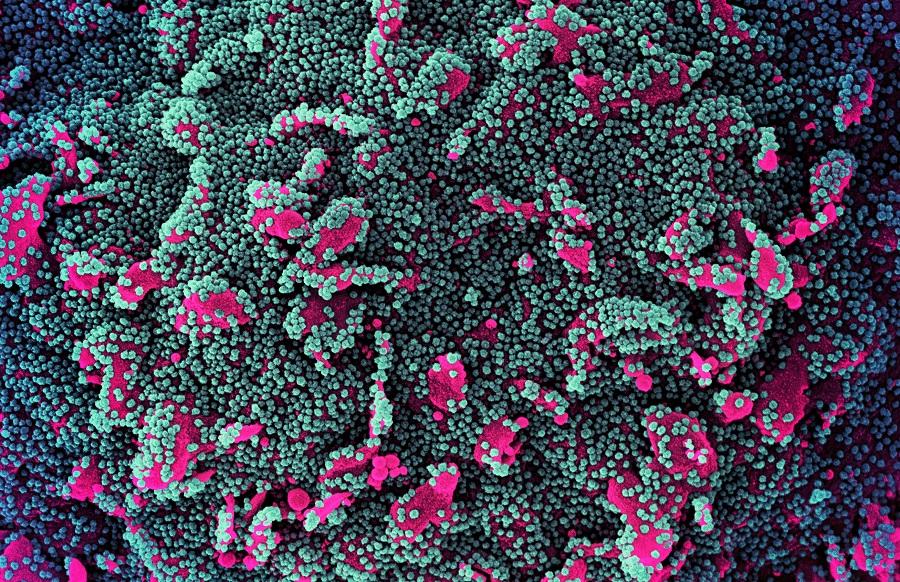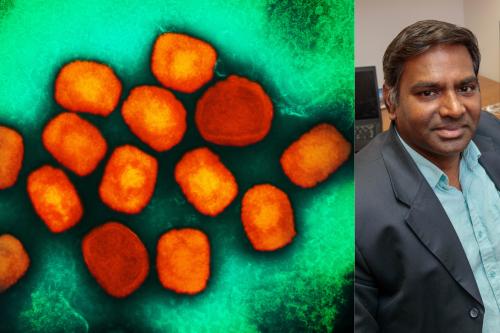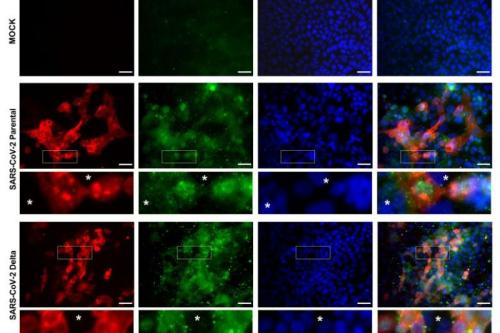
Vaithi Arumugaswami, D.V.M., Ph.D.
- Professor, Molecular and Medical Pharmacology

Vaithi Arumugaswami, D.V.M., Ph.D., investigates how the disease-causing mechanisms of RNA viruses, such as COVID-19’s pathogen, SARS-CoV-2, affect the body and subvert its immune response. Through this work, he seeks to develop antivirals and vaccines that can be used to prevent future pandemics.
Arumugaswami has established a well-funded research program on the biology of Zika virus replication and neuroinflammation. Transmission of Zika by mosquitos leads to devastating developmental anomalies in newborns including microcephaly and congenital eye disease. Arumugaswami has developed cell culture systems — advanced human primary optic cup organoid systems and stem cell-derived neural progenitors and retinal stem cells — to investigate Zika-mediated activation of the Hippo signaling pathway, which is involved in organogenesis and inflammation. He has defined the role of Hippo pathway factors in host antiviral response. Additionally, his efforts to develop an effective Zika vaccine candidate laid the foundation to utilize this technology for founding his biotechnology start-up, Veergen, Inc.
Arumugaswami is one of the foremost investigators who commenced SARS-CoV-2 research in January 2020, before global spread of the virus. By March 2020, he had successfully completed a drug screen against the virus and identified important antiviral compounds, which yielded multiple patents. As the COVID-19 pandemic wanes, he has broadened his research focus to include multiple families of pandemic-potential RNA viruses. These efforts have led to identification of broad-spectrum antiviral agents that can be deployed in the event of a future pandemic.
Research Projects
- Defining the role of the Hippo signaling pathway in congenital Zika and COVID-19 disease progression and subsequent tissue repair and regeneration
- Developing antivirals targeting high-consequence hemorrhagic fever-causing viruses such as Hanta, Arena, Nairo and Bunya
- Elucidating the role of the cytosolic DNA Short for deoxyribonucleic acid, DNA is a double-stranded molecule that serves as the genetic blueprint for living organisms. Composed of four chemical bases, DNA encodes the instructions necessary for protein synthesis and governs the development, function, and inheritance of traits in an organism. DNA Short for deoxyribonucleic acid, DNA is a double-stranded molecule that serves as the genetic blueprint for living organisms. Composed of four chemical bases, DNA encodes the instructions necessary for protein synthesis and governs the development, function, and inheritance of traits in an organism.-Sensing STING-antiviral pathway during RNA Short for RiboNucleic Acid, this molecule carries genetic messages from DNA and is found inside living cells. These messages tell cells to make the proteins that play many critical roles in the body. RNA Short for RiboNucleic Acid, this molecule carries genetic messages from DNA and is found inside living cells. These messages tell cells to make the proteins that play many critical roles in the body. virus replication
- Developing a Zika virus-based oncolytic, or cancer-cell infecting, immunotherapy A type of treatment that uses the body's own immune system to fight cancer, infections and other diseases. This approach has revolutionized cancer care and is also being applied in experimental treatments for HIV, lupus and other conditions. immunotherapy A type of treatment that uses the body's own immune system to fight cancer, infections and other diseases. This approach has revolutionized cancer care and is also being applied in experimental treatments for HIV, lupus and other conditions. approach for the brain cancer glioblastoma
-
Post-doctoral Fellowship
- Molecular Virology, Stem Cell Biology, UCLA, 2008
Degrees
- Ph.D., Cell and Molecular Biology, University of Arkansas, 2003
- D.V.M., Veterinary Pathology, Indian Veterinary Research Institute, 2000
-


